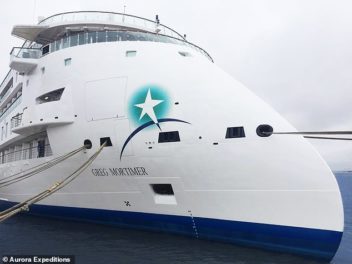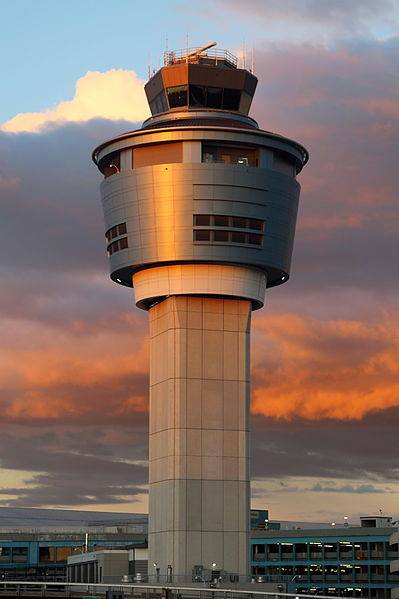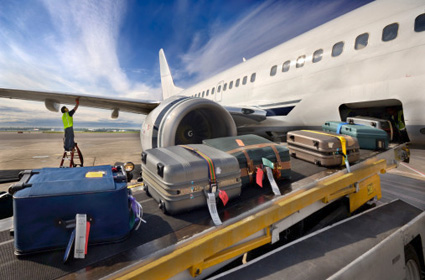A Staggering 81% Of Cruise Passengers With COVID-19 Were Asymptomatic

A Staggering 81% Of Cruise Passengers With COVID-19 Were Asymptomatic
Since the beginning of the COVID-19 outbreak, cruises have been at the forefront of news stories concerning the spread of the virus. This largely stems from the fact that cruise ships are considered Petri dishes for viruses. In March, the Diamond Princess cruise ship had the largest cluster of COVID-19 infections outside of mainland China. Because of this, questions remain as to when it will be safe for cruise companies to return to the sea. But a new study published in Thorax demonstrates the difficulty cruise companies face in returning to business.
You may remember stories about the Greg Mortimer, which was trapped off South America with coronavirus-positive passengers and crew. Chile and Argentina denied docking to the cruise line due to border restrictions. Uruguay ended up aiding the ship and assisted in the repatriation of the passengers.
A study examined test results from the cruise, which departed in mid-March, after the World Health Organization declared COVID-19 a pandemic. Medical professionals tested all passengers on board the cruise before disembarkation. Of the 217 passengers and crew on board, 128 of them (59%) tested positive for COVID-19, which was reported in April media reports. But even more startling: 81% of the positive patients exhibited no coronavirus symptoms. This study shows one of the challenges for cruise lines will be ensuring passenger safety, as asymptomatic people can be on the cruise without even knowing they are positive.
Cruise Itinerary
The ship’s planned route was an Antartica cruise departing from Argentina. All 128 passengers and 95 crew members were screened for COVID-19 symptoms, including a fever check. passengers from highly impacted countries like China, Japan, and Iran were not allowed on the cruise.
On day 3 of the cruise, the decision was made to terminate the cruise after completing the Antarctic portion. The decision came after countries began implementing new border controls and travel restrictions.
On day 13, the cruise docked in Montevideo, Uruguay. Medical officials evacuated eight passengers and crew members to hospitals in Montevideo. Uruguayan officials then tested all passengers on the ship for COVID-19. All eight passengers evacuated later tested positive for the virus.
Bad News For Cruises?
Of course, this study causes some concern over cruises returning, even in a limited capacity. Obviously, the study limits testing to just that one ship with a small number of passengers in comparison to other cruise ships. However, the study provides a metric on just how prevalent the virus can be on a cruise, even when symptoms aren’t present. It’s hard to say when cruises will return, but undoubtedly science will have to look at this information and see how it drives cruise line companies’ decisions.
The study also raises questions about the effectiveness of screening passengers before boarding. In this case, officials screened all passengers and crew before boarding the ship. However, the screen is only so effective since we know people can be asymptomatic. The CDC now recommends face masks when social distancing isn’t possible. So face masks will likely be important when cruising returns. That may be why Royal Caribbean trademarked its own version of face masks shortly after the pandemic began in the U.S. But masks do have their limits on confined cruise ships with regular interaction with many different people.
Bottom Line
A survey conducted on passengers and crew from a cruise that departed in mid-March demonstrated a significant amount of asymptomatic COVID-19 patients. Of the 217 on board, 59% tested positive for COVID-19 as they departed the ship. Of that 59%, a staggering 81% were asymptomatic. The study only includes testing from one cruise, but it raises questions about the danger of cruising returns. I booked a cruise to Hawaii last week for 2021, but did so with the understanding it may not happen.







It’s interesting that most people who get Covid-19. Don’t know it, and it’s no bother to them.
In addition, the math is showing that about .26% IFR.
So, you’re ~3x more likely to die in a car accident than by Covid-19
I think as more people see this – people will really start freely traveling – and wondering what the fuss was for.
I predict ‘social distancing’ and healthy people wearing dirty masks in public will go away by the Fall.
We’ll be back to normal a lot sooner than people think as they hear the truth.
But this is good news? It means the virus is mostly (80%) asymptomatic, and this is in an expensive Antarctic cruise situation where from personal experience the clientele is much much older. 80% asymptomatic means there must be many very-mild symptoms among the rest of 20% also (and I didn’t read about even a single death or big medical complications among this cruise group).
This simply means that we should treat covid as any other medical condition on a cruise and not panic too much or not even treat it as anything special or different from other diseases. Even if everyone on the cruise gets the virus, the highest chance is of being asymptomatic or very mild sickness not worse than other sea/travel sicknesses.
Greg, you are engaging in very simplistic thinking and drawing conclusions that have no basis in fact.
For example, just because the article doesn’t mention death doesn’t mean it didn’t occur. Nowhere on that article did
the writer provide follow up info about those infected, beyond their immediate hospitalization. Your conclusion about
The similarity between covid and other illnesses is absurd on the face of it, given that we have surpassed 100,000 deaths in four months and the rest of the world has experienced staggering fatalities as well. Baseless conclusions mixed with faulty thinking is a recipe for disaster.
UGH? A ship sailed with only 217 people, out of a capacity of 2600 passengers? The very next paragraph has the passenger number at 128? This article is a kluge of missing information.
Where does it say the capacity of the ship is 2600 people? That may be an assumption you made, but that’s not the case. It is an Antarctic cruise, which carries about 126 passengers. As the article stated, there was 217 passengers and crew.
Dan, you couldn’t be more wrong! Simple statistics show why.
USA Annual Deaths from Car Accidents: 100,000
No idea where you got the idea that you’re 3x more likely to die in a car wreck; that’s simply false. Let’s also end the focus on how many people die and start to consider that for every death there’s 10 people left with some degree of permanent injury, from lung scaring to strokes to amputations.
Please take this pandemic seriously and don’t spread misinformation like that.
I misread the article. The article was really about the much smaller cruise ship owned by Aurora Expeditions cruise line, the”Greg Mortimer.” An odd name for a cruise ship?
The Diamond Princess does have a passenger capacity of 2600, and a crew complement of 1100.
However the antarctic cruise in the article was aboard the “Greg Mortimer” cruise ship which has a passenger capacity of 216, and a crew compliment of 74.